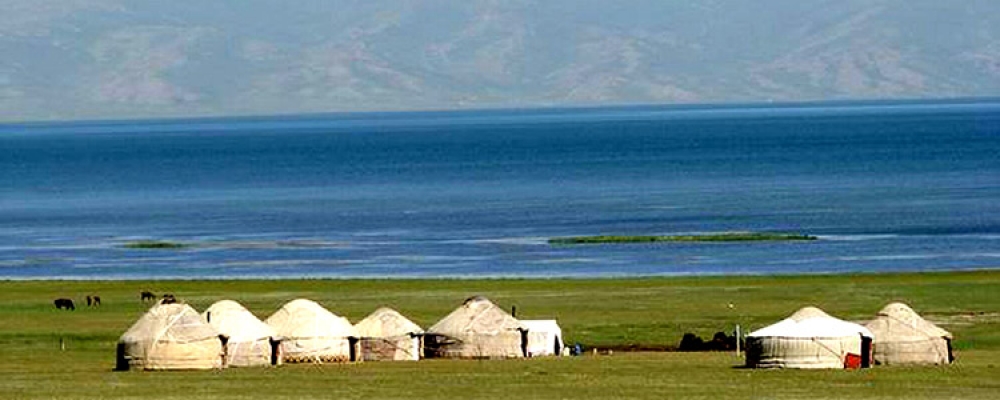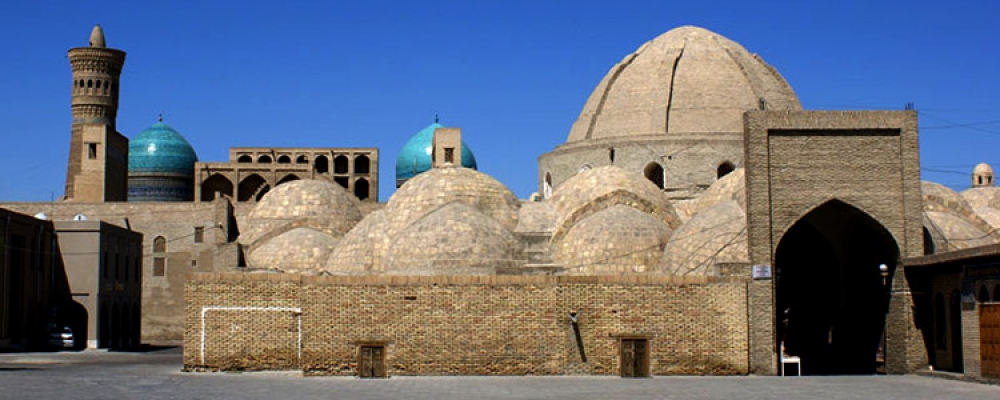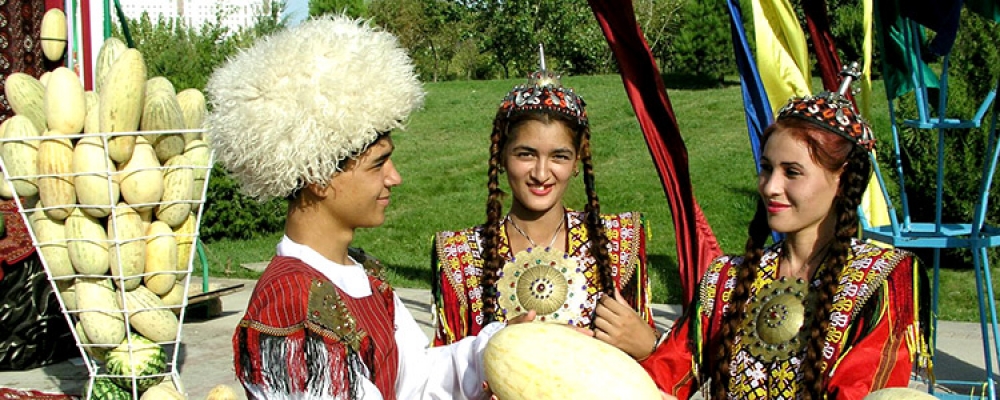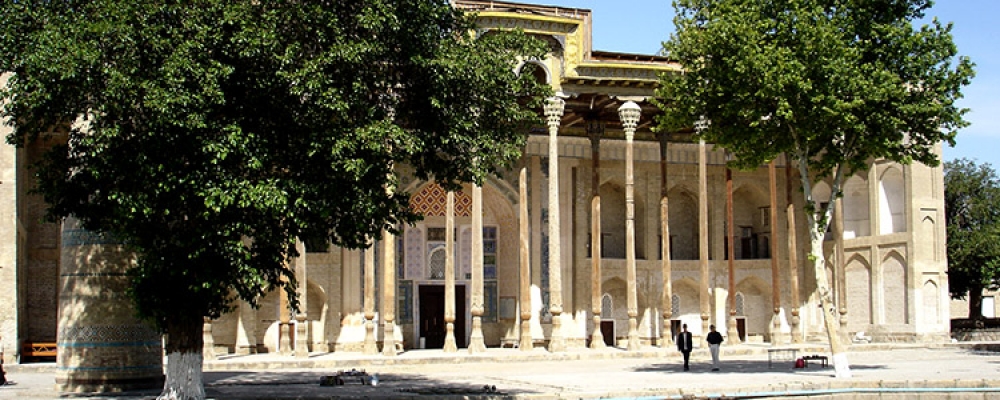Along the Great Silk road
Uzbekistan the golden middle of the Silk Road
Many visitors don't realize that Uzbekistan is a relatively new name for a very ancient culture. Our country's name dates back only to 1924, when the Soviet Union carved up Imperial Russia's former Turkestan colonies into five states and named them based on the dominant language spoken there. History buffs will be more familiar with the names this region was known by in ancient times, among them Bactria, Sogdiana and Transoxiana. There wasn't just one but several overland trade routes between China and Europe but all converged on the territory of present-day Uzbekistan, which was the geographic midpoint between where silk and other goods were picked up by camel caravans and their final destinations. China discovered how to make silk around 2700 BC and -- by threatening death to anyone who revealed the secrets to a foreigner -- managed to retain a monopoly for 3000 years. Ultimately, though, word got out and our people have been producing silk for more than 1000 years. Our fabric, called silk ikat, is made by a complicated technique which involves weaving rather than dyeing the colour into the fabric. Often, this is still done on looms operated by hand. And our ikats, which are now also made in silk/cotton blends, are so distinctive that nothing remotely resembling them is produced anywhere else in the world. Another special experience you'll have that many visitors to Uzbekistan don't: We'll visit a now world-famous art museum in Nukus, capital of the autonomous republic of Karakalpakstan, whose history is as extraordinary as its massive art collection.
Masterpieces of Architecture
Archaeological tour of Uzbekistan
Tour beyond the Oxus river
Over the course of its long history, this part of the world has been known by many names, including Transoxiana, meaning “the land beyond the Oxus River.” Today, the mighty river that extends for 2500 kilometres through Central Asia, now called the Amu Darya, forms a boundary between Uzbekistan and Turkmenistan. For the first 12 days, of this 16-day tour, we'll escort you through Uzbekistan, visiting Tashkent, Samarkand, Bukhara, Khiva and a few lesser-known places of interest. But the last four days are of special interest to travellers who enjoy visiting off-the-beaten-path destinations.
After we cross the Amu Darya, you'll be in Turkmenistan, a country that few international visitors ever get the chance to see. Highlights of this part of our tour include Turkmenistan's capital, Ashgabat, and the large archaeological park known as “Ancient Merv,” a UNESCO world heritage site, where excavations have uncovered the remains of civilizations going as far going back as 1200 BC.
EMIR TRAVEL invites you to come and enjoy the legendary hospitality of Uzbekistan people.
The best and most of Central Asia
This 21-day, three-country tour is designed for people eager to have the most comprehensive possible experience of Central Asia. On it, we'll spend 10 days in Uzbekistan, four days in the neighbouring republic of Turkmenistan, and the rest of the time in Iran, also known today, as it was in ancient history, as Persia.
Over the centuries, our part of the world has been conquered so often, and by so many nationalities, that just trying to keep track of them all is a challenge. In the 9th and 10th centuries, much of the territory we'll explore was part of the old Persian empire. During that period, in fact, Bukhara was considered to be the cultural and spiritual heart, not only of Persia but also of the entire Islamic world. Earlier, Alexander the Great and Arab invaders held sway over the region. Later, various parts of Central Asia would be dominated by nomadic Oghuz Seljuk tribes, the ancestors of present-day Turkmen; Mongols under Genghis Khan; Tamerlane, who made Samarkand his imperial capital; Uzbek tribes whose native tongue was a dialect of Turkish but who admired Persian culture so greatly that they adopted Persian as their court language; Imperial Russia; and finally, the Soviet Union. And that's just the short list!
All our conquerors left behind evidence of their presence in the form of sites now being excavated by archaeologists, our unique regional languages that have borrowed words from many larger linguistic groups, and some of the most breathtaking Islamic architecture in the world.
After we've escorted you through the highlights of Uzbekistan and Turkmenistan, we'll cross the border into Iran. On this leg of the tour, we start by visiting Mashhad, Iran's holiest city, with a huge shrine complex devoted to the 817 martyrdom of Shia Islam's eighth Imam, Reza. Other cities on our tour include Shiraz, Iran's cultural capital; Isfahan, famed for its magnificent architecture; Kashan, home to a garden considered to be the one of the most beautiful in the world; and finally the nation's capital, Tehran.







